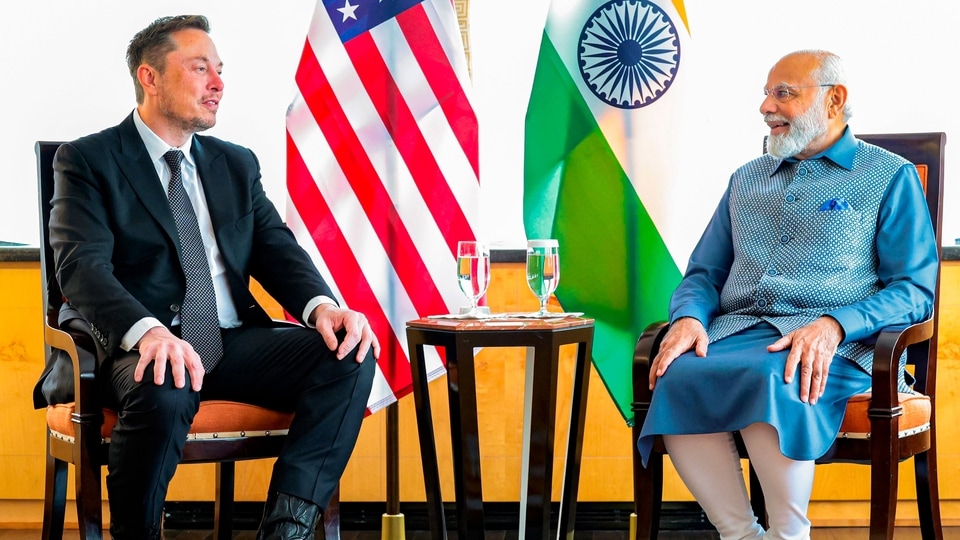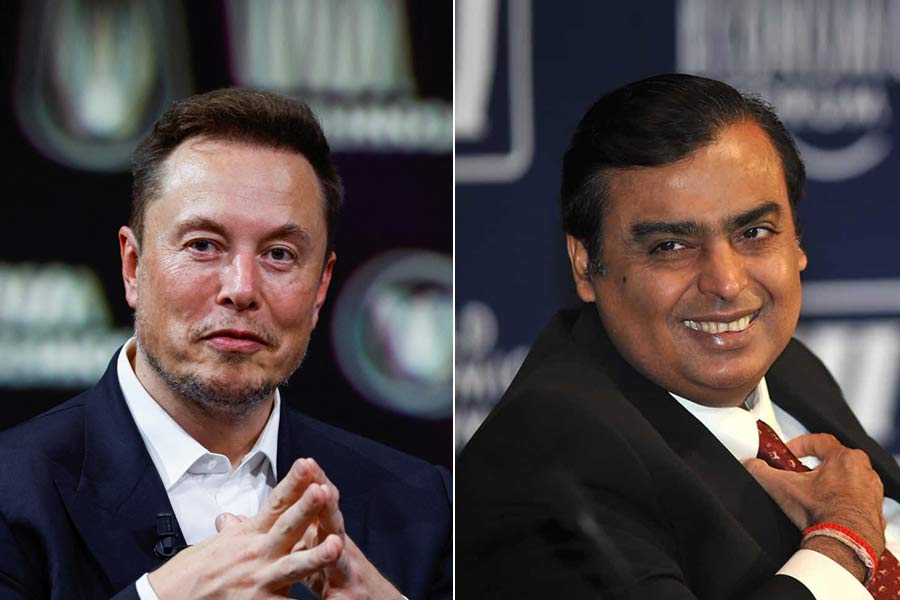Indian Government Seeks Clarity from Starlink on Data Storage and Compliance for Satellite Internet Services Even As Competition Stiffens With Bharti Group And Reliance’s Jio
SpaceX's Starlink project, the satellite internet service which provides broadband connectivity to underserved regions, is gaining attention worldwide; however, in India, the path to offering this service is laden with regulatory inquiries and concerns. The Indian government is demanding answers regarding data storage, transfer, and compliance with Indian regulations, posing significant hurdles while Starlink aims to extend its global reach.

Elon Musk’s ambitious Starlink, as yet again run into regulatory hurdles as the Indian government has expressed dissatisfaction with Starlink regarding its responses to inquiries.
The government is seeking specific answers regarding data storage and transfer through India-based gateways, among other concerns.
Alternatively, to obtain a global mobile personal communication by satellite services (GMPCS) license for offering broadband-from-space services in India, the government is requesting an unconditional compliance undertaking from the US-based company, according to officials familiar with the matter.
Currently, the Ministry of Home Affairs (MHA) is reviewing the application for security-related checks, and a meeting is scheduled later this week, where Starlink executives are expected to participate. The government’s primary concern is to prevent Indian data traffic from leaving the country.

The company needs to adhere to Indian regulations as a license holder in India, with a particular emphasis on data security. An anonymous official stated, “For security concerns, the data has to stay in India.”
Starlink has reportedly informed the government that it complies with international regulations because its satellite constellation is global, and data traffic operates accordingly.
However, the government is worried that if the data is not confined within India’s territorial boundaries, it could circumvent Indian regulations, which do not apply beyond the country’s borders.
The Department of Telecommunications (DoT) has already granted GMPCS licenses to OneWeb, supported by the Bharti Group, and Reliance Jio’s satellite communications division.
Starlink is the third company to seek a license to provide satcom services in the Indian market. It was previously reported that Starlink had also applied to the Indian National Space Promotion and Authorization Center (IN-SPACe) for the necessary regulatory approvals.
Foreign entities are now permitted to establish infrastructure such as earth stations and gateways and offer satellite services in India, subject to approval from IN-SPACe.
India’s new Space Policy 2023 has empowered IN-SPACe, an autonomous central regulatory body, to serve as a single-window agency for authorizing space activities for both government and private satellite communication players.

If approved, Starlink will need to wait for spectrum allocation from DoT; at the same time, its main competitors, OneWeb and Reliance Jio’s satellite division, are also on the waiting list for spectrum allocation.
Amazon’s Project Kuiper has also expressed interest in providing high-speed broadband services using satellites in the world’s second-largest telecom market.
The above development marks SpaceX’s second attempt to establish a presence in the Indian market. Last year, the company had to refund pre-booking fees to Indian applicants after DoT instructed it to obtain regulatory approvals first, which led the company to withdraw its communication regarding pre-orders and has since reapplied for them.
Companies are striving to launch their services quickly to gain a first-mover advantage in the Indian satellite communications market, which is currently in its early stages but holds significant potential, particularly in rural and remote areas.
According to an EY-ISpA report, India’s space economy is projected to reach $13 billion by 2025, with a compound annual growth rate (CAGR) of 6%.

What Is Starlink
Starlink is a satellite internet constellation project developed by SpaceX, the aerospace company founded by Elon Musk. Starlink’s primary goal is to provide high-speed, low-latency broadband internet access to underserved and remote areas around the world, including rural and remote regions where traditional internet infrastructure is limited or nonexistent.
Here are some critical points about Starlink:
Satellite Constellation: Starlink aims to create a vast network of thousands of small satellites in low Earth orbit (LEO) to provide internet coverage across the globe. These satellites work together to form a constellation, which allows for faster internet speeds and reduced latency compared to traditional geostationary satellites.
Global Coverage: Starlink’s goal is to provide global internet coverage, ensuring that even remote and rural areas have access to high-speed internet; the project’s global reach is a significant part of its mission. Earlier, it made international headlines because illegal miners were using it in the forests of Brazil’s Amazon,
Low Earth Orbit: One significant difference between Starlink and traditional geostationary satellites, which orbit at higher altitudes, is that Starlink’s satellites orbit in LEO, typically at altitudes ranging from 340 kilometres (211 miles) to 1,200 kilometres (746 miles).
Expanding the Network: SpaceX has been actively launching Starlink satellites in batches through its Falcon 9 rockets, and the company continues to expand the constellation to improve coverage and capacity.
User Terminals: Starlink provides customers with a user terminal, often referred to as a “dish,” which is used to connect to the satellite network; these user terminals are designed to be easy to install and set up.
Beta Service: Starlink initiated a public beta test program called “Better Than Nothing Beta” in late 2020. This program allowed users in select areas to sign up for Starlink’s internet service and test its performance.
Speed and Performance: During the beta phase, Starlink claimed to offer internet speeds ranging from 50 Mbps to 150 Mbps with latency ranging from 20 ms to 40 ms; however, these speeds can vary depending on factors like location and network load.
Competition: Starlink faces competition from other satellite internet providers like OneWeb and Amazon’s Project Kuiper. Additionally, it competes with traditional broadband and 5G providers.
Regulatory Challenges: Expanding a satellite internet network like Starlink requires regulatory approvals and licenses in various countries. Different nations may have different rules and requirements for satellite communications.

Which Countries Have Given Permission To Starlink
On April 25 2022, Hawaiian Airlines announced an agreement with Starlink to provide free internet access on its aircraft, becoming the first airline to use Starlink.
By July 2022, Starlink’s internet service was available in 36 countries and 41 markets.
In May 2022, it was announced that regulatory approval had been granted for Nigeria, Mozambique, and the Philippines. In the Philippines, commercial availability began on February 22, 2023.
In September 2023, the US-based United Against Nuclear Iran started donating subscriptions and terminals to Iranians to allow them to circumvent Iran’s internet blackout.
Here are some of the countries where Starlink is actively providing its service: United States, Canada, United Kingdom, Germany, Australia, New Zealand, France, Netherlands, Austria, Belgium, Switzerland, Denmark, Sweden, Norway, Finland, and Ireland.
The Last Bit, As Starlink, the brainchild of Elon Musk’s SpaceX, attempts to bring high-speed internet to the world’s farthest corners, the Indian government’s scrutiny could prove to be a hurdle in its expanding portfolio of countries.
The Indian government’s demand for clear answers on data management and compliance reflects the importance of data security and adherence to national policies, which the Indian government set upon.
As the events unfold, it remains to be seen how Starlink will address these concerns and whether it can join the ranks of satellite internet providers in India.




